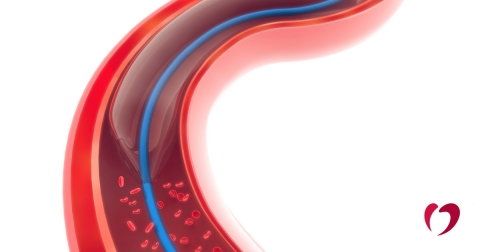Angioplasty and stents to open blocked blood vessels

Angioplasty is a minimally invasive procedure used to open a narrowed or blocked blood vessel, which could be an artery that carries blood from the heart to the body or a vein that carries blood back to the heart.
The procedure may be used to treat patients with atherosclerosis (hardening of the arteries), coronary artery disease, peripheral artery disease, carotid artery stenosis, and other conditions that affect the veins and arteries. Angioplasty can also be performed during a heart attack to help open a blocked artery and potentially limit muscle damage to the heart.
How it works
Angioplasty uses a catheter, which is a small thin tube, inserted through your blood vessel to the point of blockage. Once in place, a small balloon on the end of the catheter is inflated to help widen the blood vessel. In some cases, a small wire mesh tube called a stent is placed in the blood vessel to prevent it from narrowing again.
What to expect before and during the procedure
Prior to scheduling an angioplasty, your doctor will perform a physical examination, discuss your current medications and health history, and may order some routine tests, such as a chest x-ray, blood tests, an echocardiogram, or an angiogram.
Follow your doctor’s instructions regarding eating, drinking, or taking medications prior the procedure. The day of your angioplasty, you’ll be asked to remove all jewelry and change into a gown. An IV will be inserted to administer medication and fluids, if needed, and you will be connected to an echocardiogram (EKG) to monitor the electrical activity of your heart. Your vital signs, such as heart rate, blood pressure, and oxygen levels, will be monitored as well.
Angioplasty doesn’t require the use of general anesthesia, but you will be given a medication to help you relax. A local anesthetic will be used to numb the area where the catheter is inserted. You may feel some pressure at the insertion site, but you shouldn’t feel sharp pain and won’t feel the catheter moving through your body.
The balloon may be inflated and deflated several times during the procedure, especially if you have multiple blockages. You may feel some mild chest pain during the procedure because inflating the balloon temporarily blocks blood flow to the heart.
Risks of angioplasty and stents
As with any medical procedure, angioplasty involves some risk, including re-narrowing of arteries, blood clots, and bleeding.
In about 30 percent of cases where angioplasty alone is used, the arteries narrow again, which is called restenosis. The use of stents lowers the risk of restenosis to around 10 or 15 percent depending on the type of stent used.
Blood clots may occur after an angioplasty and stent placement, and if the clot blocks the artery completely, a heart attack can occur. You may be directed to take aspirin or a prescription blood thinner following the procedure to reduce this risk. Bleeding may also occur where the catheter was inserted in your leg or arm. While minor bruising is most common, more severe bleeding can occur in some patients.
Other risks of angioplasty, though rare, include the risk of heart attack, stroke, coronary artery damage, abnormal heart rhythms, or kidney damage.
Recovery from angioplasty and stent placement
Most patients will remain in the hospital overnight following an angioplasty so your doctor can monitor your heart and adjust your medications. Avoid strenuous exercise and heavy lifting for a day or two following the procedure, and drink plenty of water to help flush the dye from your system. Most patients return to their normal routine within a week after an angioplasty, but be sure to discuss any activity restrictions with your Oklahoma Heart Hospital physician.
If an angioplasty procedure occurs during a heart attack, the recovery process and timeline will likely be longer than for non-emergency procedures.
Following angioplasty and stent placement, it’s important to maintain a healthy lifestyle and take any medications prescribed by your doctor. To stay healthy after angioplasty, stop smoking, exercise regularly, eat a balanced diet, and ensure that other medical conditions are well controlled.




